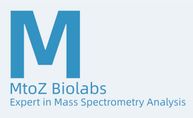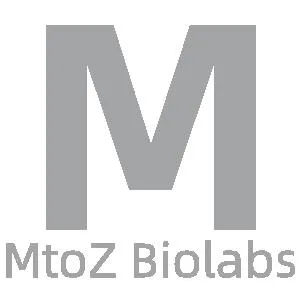
- Home
- Companies
- MtoZ Biolabs
- Services
- MtoZ Biolabs - Urine Eicosanoid ...

MtoZ Biolabs - Model eicosanoid-metabolites-urine-analysis - Urine Eicosanoid Metabolites Analysis Service
Eicosanoids, also known as eicosanoids, are a family of signaling molecules produced and secreted by various types of cells under both normal and pathological conditions. In the human body, these metabolites are excreted into body fluids such as plasma and urine. The precursors of prostanoids are 20-carbon polyunsaturated fatty acids (PUFAs) like arachidonic acid (C20:4), which are esterified in cell membrane phospholipids. Before being metabolized into eicosanoids, fatty acids (FAs) are enzymatically cleaved from phospholipids by phospholipase A. Consequently, the composition of FA membrane (e.g., PUFA content) is cell type-specific, essential for cellular function, and influenced by nutritional status.2
Eicosanoids exert diverse physiological effects. The n-6 FA arachidonic acid (C20:4) serves as a precursor to eicosanoids, predominantly generating pro-inflammatory eicosanoids, including prostaglandins (PGs) (two series), thromboxanes (TXs) (two series), leukotrienes (LTs) (four series), and hydroxyeicosatetraenoic acids (HETEs). Elevated eicosanoid levels are observed in various diseases and pathological conditions, such as type 1/2 diabetes, cardiovascular diseases, obesity, multiple sclerosis, cystic fibrosis, gastrointestinal and pulmonary diseases, neurodegenerative disorders, and certain cancers.
In urine, key eicosanoid metabolites derived from arachidonic acid that are associated with oxidative stress or pro-inflammatory states include:
Tetranor PGE-M, a stable metabolite of PGE2 synthesized by cyclooxygenase (COX)-1 and COX-2, is present in plasma but relatively unstable. Elevated urinary levels are observed in cancer patients (e.g., those with lung cancer).|8-iso-PGF2α (also known as 8-epi-PGF2α, 8-isoprostane, or iPF2α-III) is widely used as a biomarker of oxidative stress. It is formed through free radical-mediated oxidation of arachidonic acid, rather than enzymatically. Although present in plasma, it is relatively unstable. Elevated levels are found in patients with neurodegenerative diseases or type 1/2 diabetes.|2,3-dinor-8-iso-PGF2α, a β-oxidation product of 8-iso-PGF2.|2,3-dinor-TXB2.|11-dehydro-TXB2, a stable urinary metabolite of TXA2 produced by COX-1. Elevated levels are observed in diabetes patients and are indicative of platelet activation.|LTE4, a metabolite of LTD4 formed from LTC4 ; leukotriene synthesis is regulated by 5-lipoxygenase. LTE4 is used as a biomarker to predict asthma and reflects systemic LT status.|12-HETE, produced by 12-lipoxygenase. Its concentration is elevated in female diabetes patients and hypertension individuals. Similar to 11-dehydro-TXB2, increased 12-HETE levels may be associated with platelet activation.
Eicosanoids metabolites in urine are typically measured using GC-MS or LC-MS/MS, processes that often require complex and time-consuming sample extraction and derivatization. Although methods for profiling of individual urinary eicosanoid substances exist, few techniques quantify eicosanoids produced from different pathways.MtoZ Biolabs offers reliable, rapid, and cost-effective eicosanoid metabolite analysis services and utilizes advanced LC-MS/MS systems for high stability, reproducibility, and sensitivity in its separation, characterization, identification, and quantification.
1. PGE-M (Tetranor-13,14-Dihydro-15-Keto-PGE2)
2. PGF-M (Tetranor-13,14-Dihydro-15-Keto-PGF2α)
3. PGI-M (2,3-Dinor-6-Keto-PGF1α)
4. TXB-M (2,3-Dinor-TXB2)
5. LTE4
MtoZ Biolabs is an integrate contract research organization (CRO) providing advanced proteomics, metabolomics, bioinformatics, and biopharmaceutical analysis services to researchers in biochemistry, biotechnology, and biopharmaceutical fields. The name of MtoZ represents “mass to charge ratio” in mass spectrometry analysis, as most of our services are provided based on our well-established mass spectrometry platforms. Our services allow for the rapid and efficient development of research projects, including protein analysis, proteomics, and metabolomics programs.
MtoZ Biolabs is specialized in quantitative multiplexed proteomics and metabolomics applications through the establishment of state-of-the-art mass spectrometry platforms, coupled with high-performance liquid chromatography technology. We are committed to developing efficient, and effective tools for addressing core bioinformatics problems. With a continuing focus on quality, MtoZ Biolabs is well equipped to help you with your needs in proteomics, metabolomics, bioinformatics, and biopharmaceutical research. Our ultimate aim is to provide more rapid, high-throughput, and cost-effective analysis, with exceptional data quality and minimal sample.
Email: marketing@mtoz-biolabs.com
